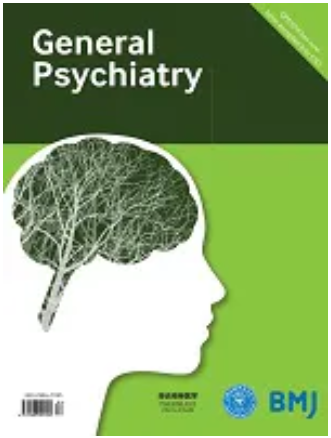高频强电流 tACS:重度抑郁症患者非药物疗法的新曙光
IF 5.3
3区 医学
Q1 PSYCHIATRY
引用次数: 0
摘要
评论:经颅交变电流刺激治疗抑郁症:随机对照试验。作者:Wang H, Wang K, Xue Q, et al .脑。2022;1451:83-91.doi:10.1093/brain/awab252.重度抑郁障碍(MDD)是一种常见的严重精神疾病,会反复发作。最常用的治疗方法是药物治疗,但药物治疗存在一系列副作用,有效率低于50%。经颅交变电流刺激(tACS)是无创脑刺激的一种,是一种轻型、可穿戴的皮质刺激设备。它通过在头皮上施加电流,产生的交流电流经刺激电极之间的指定区域,从而调节大脑皮层的兴奋性和自发脑活动。最近发表在《脑》(Brain)杂志上的一项研究证明了对 MDD 患者进行 tACS 刺激的临床潜力。该研究调查了 tACS 对首次发病、未服用药物的 MDD 患者的临床安全性和有效性。结果显示,与接受假刺激的患者相比,连续四周每天接受20次、每次40分钟、77.5赫兹、15毫安、一次前额刺激和两次乳突刺激的患者病情缓解率明显更高。此外,tACS 治疗缓解了抑郁状态,在 4 周的随访测量中显示出了持久的效果;仅有一些轻微的治疗引发的不良反应报告。本文章由计算机程序翻译,如有差异,请以英文原文为准。
High frequency strong current tACS:a new dawn of non-drug therapy for patients with major depressive disorder
A commentary on: Transcranial alternating current stimulation for treating depression: a randomized controlled trial. By Wang H, Wang K, Xue Q, et al . Brain. 2022;1451:83-91.doi:10.1093/brain/awab252. Major depressive disorder (MDD) is a common severe mental illness with recurring episodes. The most commonly used treatment is drug therapy, which is associated with a series of side effects and has an efficacy rate below 50%.1 Non-invasive brain stimulation technique has been gradually applied in clinical practice. Transcranial alternating current stimulation (tACS), a form of non-invasive brain stimulation, is a light, wearable piece of equipment for cortical stimulation. It modulates cortical excitability and spontaneous brain activity by applying an electric current to the scalp, generating an alternating current that flows through the specified area between the stimulation electrodes. A recent study published in Brain proved the clinical potential of tACS stimulation for patients with MDD. The study investigated the clinical safety and efficacy of tACS in first-episode, drug-naive patients with MDD. The results showed that patients who received 20 daily 40 min, 77.5 Hz, 15 mA, one forehead and two mastoid sessions of active stimulation over four consecutive weeks achieved significantly higher remission rates than those who received sham stimulation. In addition, tACS treatment alleviated the depression state with lasting effects shown in 4 weeks of follow-up measurements; only some mild treatment-emergent adverse events were reported.2 This is consistent with previous reports that tACS is associated with fewer …
求助全文
通过发布文献求助,成功后即可免费获取论文全文。
去求助
来源期刊

General Psychiatry
医学-精神病学
CiteScore
21.90
自引率
2.50%
发文量
848
期刊介绍:
General Psychiatry (GPSYCH), an open-access journal established in 1959, has been a pioneer in disseminating leading psychiatry research. Addressing a global audience of psychiatrists and mental health professionals, the journal covers diverse topics and publishes original research, systematic reviews, meta-analyses, forums on topical issues, case reports, research methods in psychiatry, and a distinctive section on 'Biostatistics in Psychiatry'. The scope includes original articles on basic research, clinical research, community-based studies, and ecological studies, encompassing a broad spectrum of psychiatric interests.
 求助内容:
求助内容: 应助结果提醒方式:
应助结果提醒方式:


